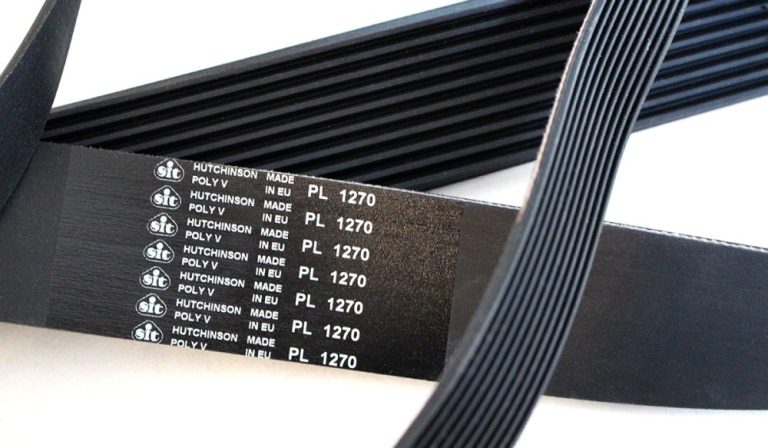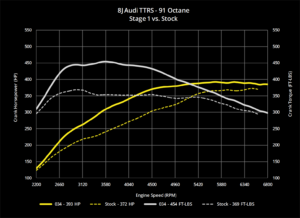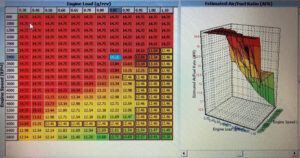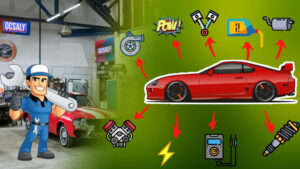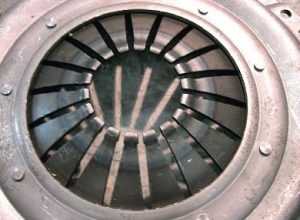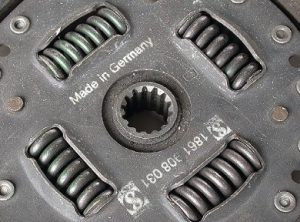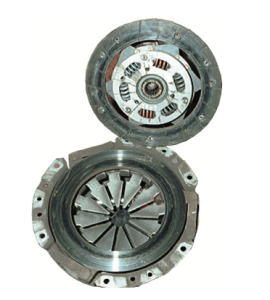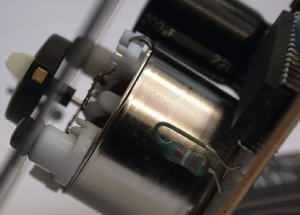Multi-V belts and pulleys are an essential component of many industrial machines, vehicles, and equipment. These belts and pulleys work together to transmit power from the engine or motor to various mechanical components, including pumps, fans, compressors, and more.
In this blog, we’ll take a closer look at multi-V belts and pulleys, how they work, and the benefits they offer.
What are Multi-V Belts?
Multi-V belts, also known as ribbed or serpentine belts, are a type of power transmission belt that feature multiple V-shaped ribs on their inner surface. These ribs fit into corresponding grooves on the pulley, providing a secure grip and preventing slippage.
Multi-V belts are typically made from durable materials such as rubber, neoprene, or polyurethane, and are available in a range of widths, lengths, and thicknesses to suit various applications.
How Do Multi-V Belts Work?
Multi-V belts work by transmitting rotational force from the engine or motor to the pulley system. As the engine or motor rotates, the multi-V belt rides along the pulleys, engaging with the grooves on the pulley to transmit torque to the connected machinery.
The V-shaped ribs on the inner surface of the belt help to distribute the force evenly across the width of the belt, increasing its grip on the pulley and reducing slippage. This design also allows for higher power transmission compared to other types of belts.
What are Pulleys?
Pulleys are circular wheels with grooves or ridges around their outer circumference. Pulleys are used in conjunction with belts to transmit power from one component to another.
Pulleys come in various sizes and designs, depending on their intended application. They can be made from a range of materials, including cast iron, steel, aluminum, or plastic.
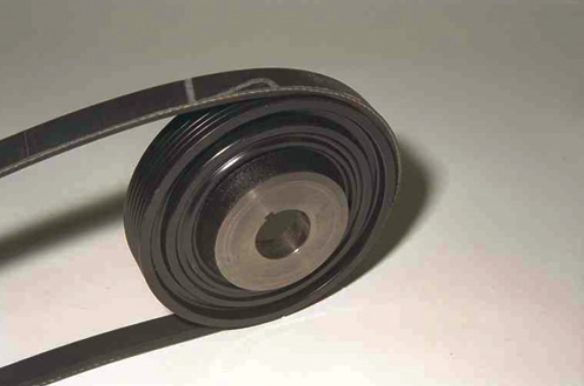
How Do Pulleys Work with Multi-V Belts?
Pulleys work with multi-V belts by providing a surface for the belt to grip onto. The grooves or ridges on the outer circumference of the pulley are designed to match the V-shaped ribs on the inner surface of the belt, creating a secure fit that helps to transmit power efficiently.
Pulleys can be designed in different configurations, such as flat, crowned, or tapered, to provide different levels of belt support and reduce belt wear. Crowned pulleys are designed with a slightly curved surface, which helps to center the belt and prevent slippage, while tapered pulleys have a narrower groove at one end, which helps to reduce the load on the belt.
Benefits of Multi-V Belts and Pulleys
Multi-V belts and pulleys offer several benefits compared to other types of power transmission systems. Some of the key benefits include:
- High power transmission: Multi-V belts can transmit higher power than other types of belts, thanks to their V-shaped ribs, which provide better grip and reduce slippage.
- Efficient operation: Multi-V belts and pulleys operate with high efficiency, thanks to their low friction design, which helps to reduce energy losses.
- Reduced maintenance: Multi-V belts and pulleys require minimal maintenance compared to other types of power transmission systems, thanks to their durable construction and low wear rates.
- Versatility: Multi-V belts and pulleys can be used in a wide range of applications, from automotive engines to industrial machinery, making them a versatile solution for many different industries.
Conclusion
Multi-V belts and pulleys are an essential component of many industrial machines and vehicles, providing efficient and reliable power transmission. These components offer several benefits, including high power transmission, low maintenance, and versatility, making them a popular choice across a range of industries.
One of the key advantages of multi-V belts and pulleys is their ability to transmit higher power than other types of belts. The V-shaped ribs on the belt’s inner surface help to distribute the force more evenly across the belt’s width, increasing its grip on the pulley and reducing the risk of slippage. This means that multi-V belts can handle higher torque and rotational speeds, making them ideal for use in high-performance applications such as automotive engines or industrial machinery.
Multi-V belts and pulleys also offer high efficiency, thanks to their low-friction design. This helps to reduce energy losses and increase the overall efficiency of the system. In addition, the low wear rates of multi-V belts and pulleys mean that they require minimal maintenance, making them a cost-effective solution for many industries.
Another advantage of multi-V belts and pulleys is their versatility. They can be used in a wide range of applications, from small engines and power tools to large industrial machinery and vehicles. This makes them a popular choice across many different industries, including automotive, manufacturing, agriculture, and more.
When selecting a multi-V belt and pulley system, it’s important to choose the right size and configuration for your specific application. Factors to consider include the horsepower of the engine or motor, the rotational speed of the pulleys, and the load requirements of the connected machinery. It’s also important to ensure that the pulleys are properly aligned and tensioned to prevent excessive wear and premature failure of the belt.
In summary, multi-V belts and pulleys are a reliable and efficient solution for power transmission in many industrial applications. Their high power transmission capacity, low maintenance requirements, and versatility make them a popular choice across many industries. If you’re looking to upgrade your power transmission system or are starting from scratch, multi-V belts and pulleys are definitely worth considering.
While multi-V belts and pulleys offer many advantages, there are also some disadvantages to consider when choosing this type of power transmission system. Here are a few:
- Limited service life: Multi-V belts and pulleys can have a limited service life, especially in high-performance applications. This is due to the wear and tear that occurs as the belt rides along the pulley, which can cause the ribs on the belt to wear down over time. As the belt wears, its grip on the pulley decreases, leading to reduced power transmission and increased risk of slippage.
- Reduced power transmission under misalignment: Multi-V belts and pulleys are sensitive to misalignment, which can reduce their power transmission capacity and increase wear rates. Misalignment can occur when the pulleys are not properly aligned or when the belt is not tensioned correctly, leading to uneven wear and reduced efficiency.
- Increased complexity: Compared to other types of power transmission systems, multi-V belts and pulleys can be more complex and require more components. For example, tensioners and idler pulleys may be required to maintain proper belt tension and alignment. This can increase the cost and complexity of the system, as well as the risk of component failure.
- Noise and vibration: Multi-V belts and pulleys can generate more noise and vibration compared to other types of power transmission systems. This is due to the contact between the ribs on the belt and the grooves on the pulley, which can cause vibration and noise as the belt moves along the pulley.

